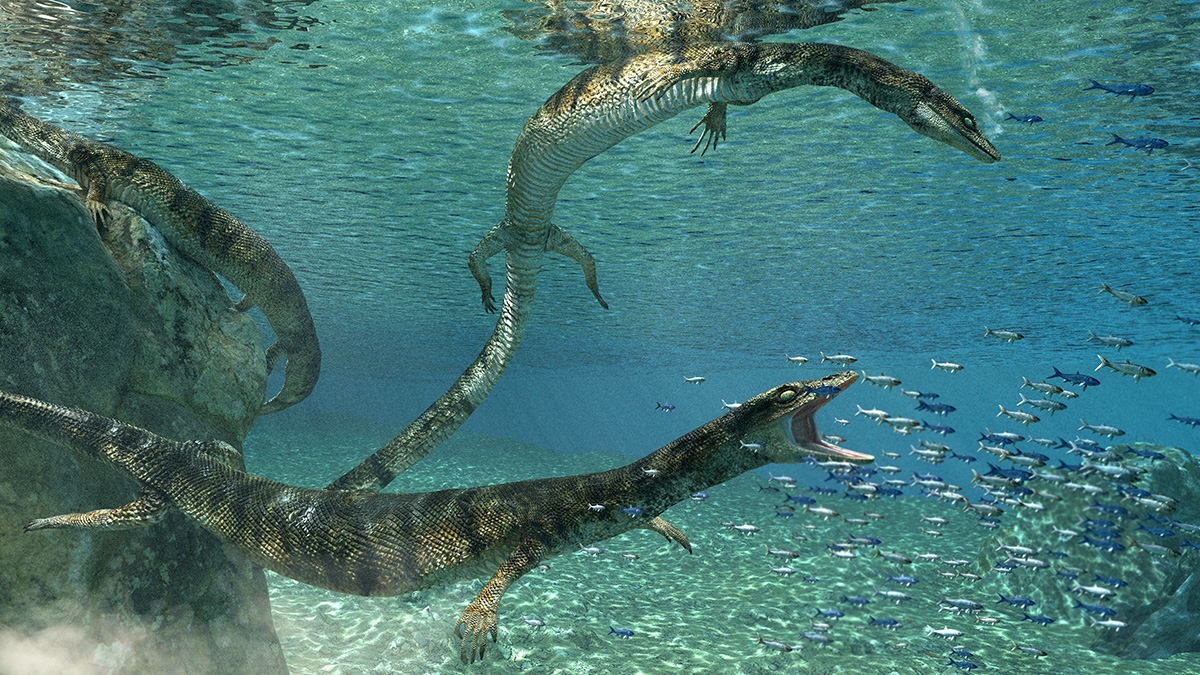
An illustration of the new species, Primitivus manduriensis, in its marine environment. Credit: Fabio Manucci
University of Alberta paleontologists have found a new marine lizard specimen, with its muscle and skin intact, in a promising new site located in Pugila, Italy.
The 70 to 75-million year-old fossil is a dolichosaur, a marine lizard that is related to snakes and mosasaurs. Its name is Primitivus manduriensis after the local Manduria variety of red wine grape primitivo. "They are essentially, small, long-bodied animals that look like regular lizards with longer necks and tails," explained Ilaria Paparella, PhD student and lead author on the study. "They have paddle-like hands and feet for swimming, but could also move on land."
The fossil is significantly younger than other, existing specimens from the group, extending the time range of their existence by about 15 million years.
For Paparella, one of the most interesting things about the specimen was the ability to study the well-preserved soft tissues, including scales, muscle, and skin. She conducted this research as part of her PhD with Professor Michael Caldwell, paleontologist and chair in the Department of Biological Sciences.
"There needs to be very special conditions for soft tissue to be preserved on a fossil," she explained. "The location where the Primitivus manduriensis was found has a great deal of potential. We hope to get permits from the Italian authorities to conduct further field work."
This fossil was found in what was formerly a shallow water environment. After it died, the lizard fell to the bottom and was covered in sediment, safe from the disarticulating effects of moving water. With no apparent predators around to feed off of the carcass, it remained largely intact.
"This was the first time I've ever had the opportunity to look at the complete picture of a beautifully preserved specimen, right down to the scales," said Paparella. "For living species, scientists use scale patterns and skin for identification. It was very unique to be using these techniques to look at a specimen that died 70 million years ago."
The paper, "A new fossil marine lizard with soft tissues from the Late Cretaceous of Southern Italy," is published in Royal Society Open Science (doi: 10.1098/rsos.172411).